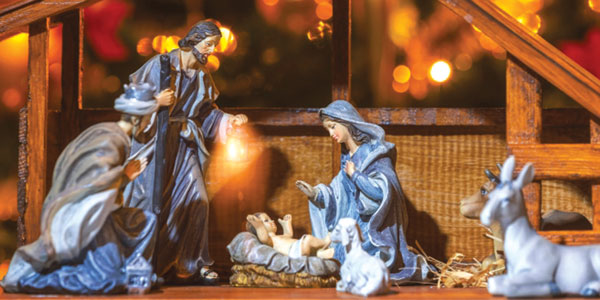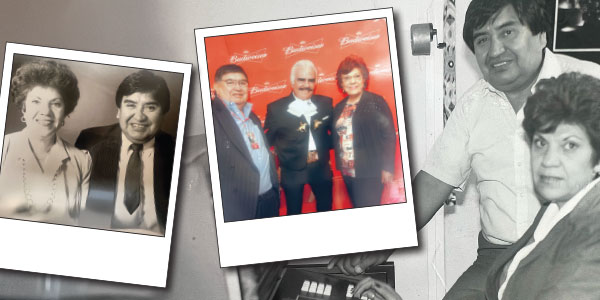
By Tere Siqueira
Whether performed by children, set up as figurines in front of a Christmas tree or installed as a piece of art in a church, the nativity scene is a significant Christmas tradition.
It also is a longstanding one.
The origin of the nativity scene goes back to the 1200s, multiple sources have reported. St. Francis of Assisi is believed to have been the first person to install a nativity scene. During the winter of 1223, he built a straw house with a crib, then gathered others around it and even brought in a donkey to add more fidelity to the scene.
Europe eventually adopted the nativity scene as a Christmastime tradition. However, history experts are not sure if people played Mary and Joseph during the first displays.
Latin Americans have developed their own nativity customs. Tradition dictates that nativity scenes should be set up on Dec. 7, observed as the day of the immaculate conception of the Virgin Mary, but without putting baby Jesus in the cradle. The baby does not appear in nativity scenes until midnight Dec. 25, Christmas Day. Later, on Dec. 31, people gather to dress the baby Jesus while celebrating.
Latin American holiday celebrations continue through Jan. 6. Known as the Dia de Reyes (Three Kings Day in English) and observed as the Epiphany holiday in other parts of the world, Jan. 6 is the day when kids get their holiday presents and the Wise Men are added to the nativity scene. The tradition is based on the biblical story of the Magi visiting and giving gifts to Jesus. After the kids get their presents, Latin families will gather to eat a rosca – a round pastry decorated with candied fruit, figs and cherries.
The rosca is filled with a baby Jesus figure. Whoever gets one in their slice must cook tamales for the family on Feb. 2, the day the Virgin of Candelaria is honored. People also dress up their baby Jesus figurine and take it to Mass. After that celebration, the nativity scene is taken down until December.
__________________________________________________________________________________________
Las tradiciones navideñas se remontan cientos de años
Ya sea que sea representado por niños, montado con figuras frente a un árbol de Navidad o instalado como una obra de arte en una iglesia, el nacimiento es una importante tradición navideña.
También tiene una larga historia.
El origen de la escena del nacimiento se remonta a los años 1200, según informaron varias fuentes. Se cree que San Francisco de Asís fue la primera persona en instalar un nacimiento. Durante el invierno de 1223, construyó una casa de paja con una cuna, luego reunió a otros a su alrededor e incluso trajo un burro para agregar más fidelidad a la escena.
Europa finalmente adoptó el nacimiento como una tradición navideña. Sin embargo, los expertos en historia no están seguros si la gente interpretaba a Maria y José durante las primeras exhibiciones.
Los latinoamericanos han desarrollado sus propias costumbres de natividad. La tradición dicta que los nacimientos se deben establecer el 7 de diciembre, celebrado como el día de la inmaculada concepción de la Virgen María, pero sin poner al niño Jesús en la cuna. El bebé no se pone en el nacimiento hasta la medianoche del 25 de diciembre, el día de Navidad. Más tarde, el 31 de diciembre, las personas se reúnen para vestir al niño Jesús mientras celebran.
Las celebraciones festivas en América Latina continúan hasta el 6 de enero. Conocido como el día de Reyes y celebrado como la fiesta de la Epifanía en otras partes del mundo, el 6 de enero es el día en que los niños reciben sus regalos de Navidad y los Reyes Magos se agregan a la escena del nacimiento. La tradición se basa en la historia bíblica de los magos que visitan y le dan regalos a Jesús. Después de que los niños reciban sus regalos, las familias latinas se reunirán para comer una rosca, un pastel redondo decorado con frutas confitadas, higos y cerezas.
La rosca está llena de una figura del niño Jesús. Quien tenga uno en su porción debe cocinar tamales para la familia el 2 de febrero, el día en que se honra a la Virgen de la Candelaria. La gente también viste su figurita del niño Jesús y la lleva a misa. Después de esa celebración, el nacimiento se retira hasta el 2 de febrero.










